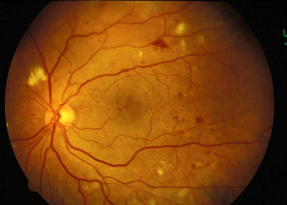Work-life balance easily upset, tough to restore
Doctors sometimes struggle with their own poor health choices, as busy days in the office are carried home. Burnout, depression and stress can lead to smoking, drinking and weight gain. Find a balance that works.
Hitting the snooze button rather than getting up to exercise, gobbling breakfast in the car, or knocking back that second or third drink after an emotional day.
Doctors aren't immune to poor health choices, the very ones they lecture patients about, as they struggle to carve out a personal life amid the tumult of treating patients. Indulgences that might be rationalized as a temporary crutch during residency can spill over into later years.

“I think doctors can behave very self-destructively when they are so stressed,” said Elaine Schattner, MD, FACP, a clinical associate professor of medicine at Weill Cornell Medical College in New York City. “I've seen plenty of doctors at meetings and otherwise who are drinking perhaps more than they should and sleeping too little.”
Burnout, depression and excess stress can all erode work-health balance. “I think there is still too much of a barrier against the idea of a clinician taking care of ourselves as we do this work,” said Neda Ratanawongsa, MD, MPH, FACP, an internist and assistant professor in the department of medicine at the University of California, San Francisco. “But I think in order to take better care of your patients, you have to take care of yourself.”
Supporting her contention, one 2012 study found physicians with normal body mass index (BMI) were far more likely—30% versus 18%—to discuss weight loss with obese patients compared with their overweight or obese physician counterparts. The findings, published in the journal Obesity, were based on a survey of nearly 500 primary care physicians.
Weight loss counseling isn't the only area where good habits matter, said Robert E. Sallis, MD, co-director of the sports medicine fellowship training program at Kaiser Permanente Medical Center in Fontana, Calif. “There is a lot of evidence out there that physicians who themselves exercise are more likely to prescribe it to their patients, more likely to be a role model,” he said.
Finding balance
Physicians' habits have improved since the days when doctors lit up just outside the hospital doors, said Lenard Lesser, MD, a research physician at the Palo Alto Medical Foundation Research Institute in Palo Alto, Calif., who authored a commentary scrutinizing physician eating habits in the Sept. 12, 2012 Journal of American Medical Association.
Among physicians, 4% report smoking compared with 15% of nurses and 20% of other working adults, according to results published in the fall of 2012 from the Gallup-Healthways Well-Being Index. They also were slightly more likely to report eating healthy the prior day—66% of doctors did compared with 59% of nurses and 62% of other workers, according to the phone survey, which reached nearly 9,200 doctors and nurses from January 2011 through August 2012.
Some other perspectives on physician health, though, aren't quite as rosy. Dr. Lesser's JAMA commentary cited a 2004 study, which found that 44% of male doctors are overweight or obese. It's still far from unusual, he said, to observe doctors gulping down sugary beverages during rounds.
Another more recent JAMA viewpoint, published Jan. 9, 2013, cited several studies showing sub-par physical activity by physicians. One study, published in 2003 in the Journal of the American Medical Women's Association, found that while nearly all of the 4,501 female physicians surveyed reported exercising, just 49% did so regularly.
According to federal physical activity guidelines, all adults through age 64, and ideally later in life, should exercise moderately at least 150 minutes each week. Overwork is not an excuse, Dr. Sallis said.
“We're not the only profession that works long hours,” said Dr. Sallis, who co-authored the Jan. 9, 2013 JAMA commentary, which challenged clinicians to commit to 30 minutes of exercise daily, even if it's in 10-minute increments.
Dr. Sallis chairs the Exercise is Medicine program, developed by the American College of Sports Medicine, which calls regular exercise a vital sign, one that doctors should measure at every patient exam. To that end, some medical schools are starting to highlight physical activity for their own physicians in training, Dr. Sallis said.
“Patients may be inspired more by [a physician] who is a little overweight and struggling, but is getting their exercise in,” he said. “They don't have to be a triathlete.”
Another ongoing effort, called the Healthier Hospitals Initiative, is trying to improve not only the environmental health of a building but also what food the clinicians working there consume. In the last decade, hospitals have taken some steps to clean up their act, said Dr. Lesser. “I think there is an acknowledgement now that hospitals really shouldn't be junk food repositories,” he said.
But there's plenty of room for improvement, he noted. One survey that Dr. Lesser helped conduct at 14 California children's hospitals in 2010 determined that fewer than one-third of them posted nutritional information at the site of purchase and just 7% of the 384 entrees served met recommended nutritional criteria, according to the findings, published in 2012 in Academic Pediatrics.
Institutional shifts
At the University of South Carolina School of Medicine-Greenville, a recently launched medical school, leaders have stressed the importance of physical fitness for doctors as well as patients, said Jennifer Trilk, PhD, clinical assistant professor in exercise physiology at the medical school's department of biomedical sciences.
When Dr. Trilk met the charter class of slightly more than 50 students in 2012, she gave a presentation about how to maintain “their own health and sanity during medical school.” Part of her prescription: Find time for a walk or a run at least once a day. “Having them maintain their own health is key to surviving what we tell them is the hardest four years of their life,” Dr. Trilk said.
Last fall, Dr. Trilk paired up with a student to organize a team to run the Susan G. Komen Race for the Cure. Nearly the entire medical school class participated in the 5K, after Dr. Trilk led a student running class, training a mix of students who ranged from never-runners to former track athletes.
As a group, physicians also can leverage their clout in other ways, such as by protesting the frequently poor meal options at medical meetings, noon educational conferences and other captive food situations, Dr. Lesser said. In his 2012 JAMA commentary, Dr. Lesser argued that medical meeting organizers could motivate food vendors to change.
At a minimum, the vendors could be required to post the calorie counts of their offerings, he said. Even better, a group of medical organizations could band together to certify low-calorie, more nutritious meals, he said.
In his commentary, Dr. Lesser described a typical 1,280-calorie noon conference meal: turkey sandwich, bag of chips, cookie and 12-ounce sugary beverage. A satisfying 700-calorie alternative, he wrote, might include a vegetable and hummus sandwich on whole wheat, unsweetened ice tea and a small piece of dark chocolate.
Personal intervention
It's common for doctors to shed non-medical hobbies or passions as they work their way through busy residency years, “whether that's exercise or competitive racing or music,” Dr. Ratanawongsa said.
To some degree, the limitations on resident work hours have made it easier for doctors to take care of themselves during training. But there have been some ripple effects, Dr. Schattner said. “I think the problem that's overlooked by the calls for restriction on residents' hours is that it's older doctors who take up the slack now,” she said.
Particularly as doctors move into the “sandwich” phase of middle age, work and life pressures can leave little time for eating healthy or exercising. The long hours of physicians after training pile on to the long-term toll and hazards of stress. “The system offers no slack for physicians whose spouses are ill or parents are ill or whose children need attention,” she said.
Colleagues may fill in as much as feasible, but they're skipping their own family dinners or simply missing sleep, Dr. Schattner said. “After a while, people get tired of covering,” she said. “What should be sympathy or accommodation or at least understanding turns into annoyance and anger toward someone who is causing another doctor to work longer hours.”
Whether it's stress or burnout or depression, doctors can feel boxed out from seeking help, Dr. Schattner said. She pointed out that hospital boards or malpractice companies can ask if a doctor has sought mental health assistance, or request a list of their current medications. Surgeons and other practitioners may be afraid to see a psychiatrist, even when they realize they're behaving self-destructively or depressed, she added.
Practicing moderation
Some stress doesn't necessarily erode the quality of a physician's care, according to a study that Dr. Ratanawongsa helped to author.
The study of 350 encounters, published in the December 2012 Journal of General Internal Medicine, found that HIV clinicians under high levels of stress offered less psychosocial information and received lower patient ratings, compared with low stress clinicians.
But the study of 33 clinicians, 70% of them physicians, also found that those under moderate stress weren't rated any lower than their low-stress counterparts. In some regards, they also were more likely than their low-stress colleagues to strive to connect with their patients, including exhibiting a positive affect and using more partnering statements, the study found.
“It seems there is a medium level where you're stressed, but it may be because you're working really hard to take care of your patients,” Dr. Ratanawongsa said.
In short, physicians should practice more of the moderation they preach to patients, Dr. Sallis said. “Hey, it doesn't have to be that much,” he said. “If you plot it, the benefits of exercise for the time spent, the curve is steepest during the first 15 to 20 minutes a day.”
At the Kaiser Permanente facility in Fontana, the stairwells have been painted and better lighted to encourage more use. “The elevators are for patients who are in wheelchairs,” Dr. Sallis quipped.
Dr. Ratanawongsa acknowledged the difficult balancing act required of physicians. But sometimes the red flags are difficult to miss, she said. “Like when my 3-year-old son comes up to me and shuts my computer and says, ‘Mommy, stop working.’”





